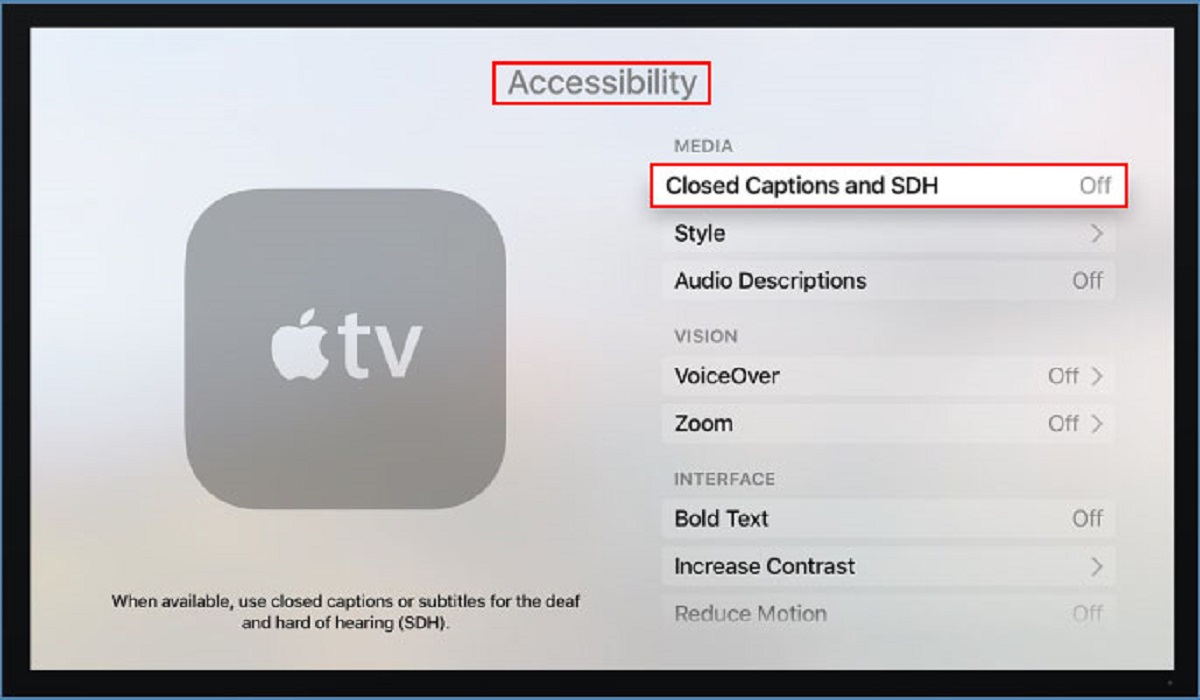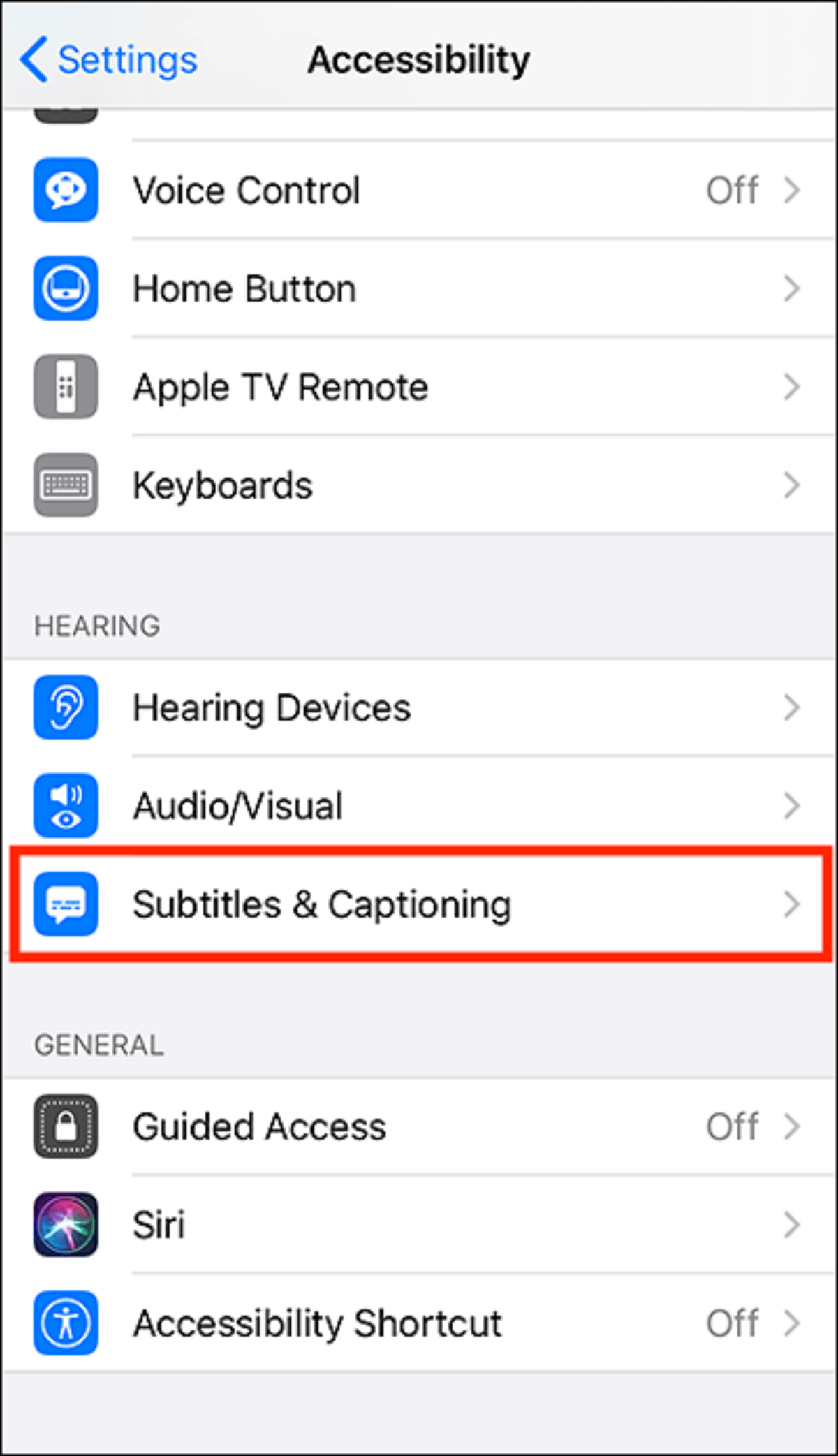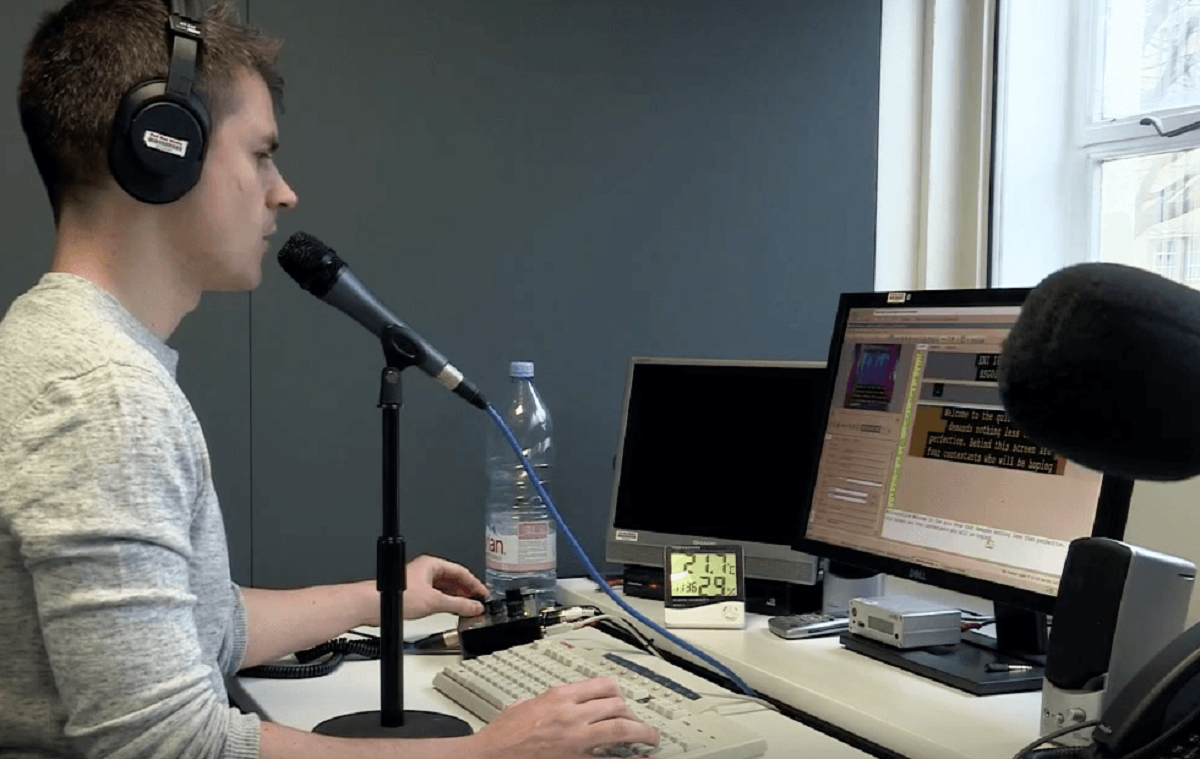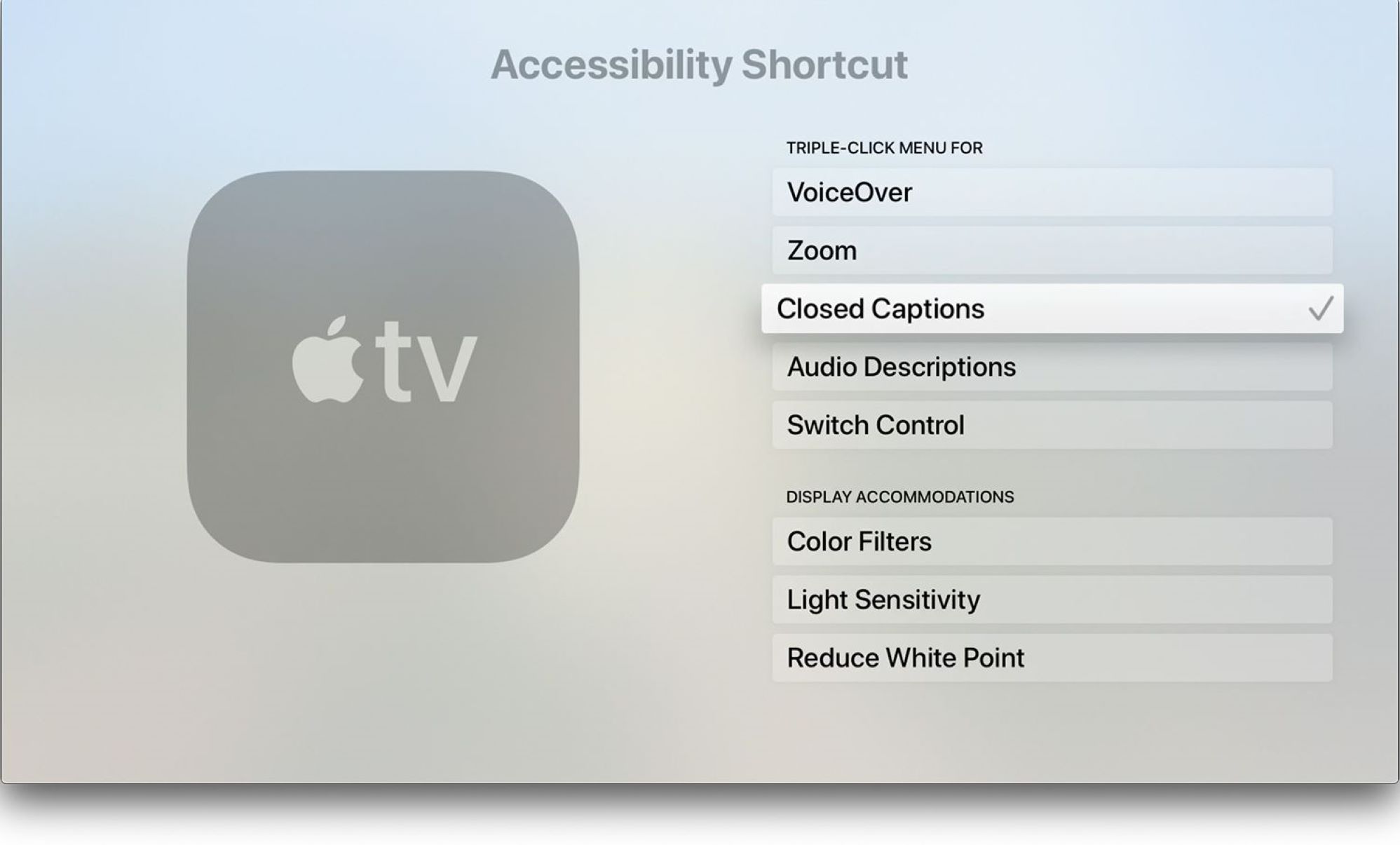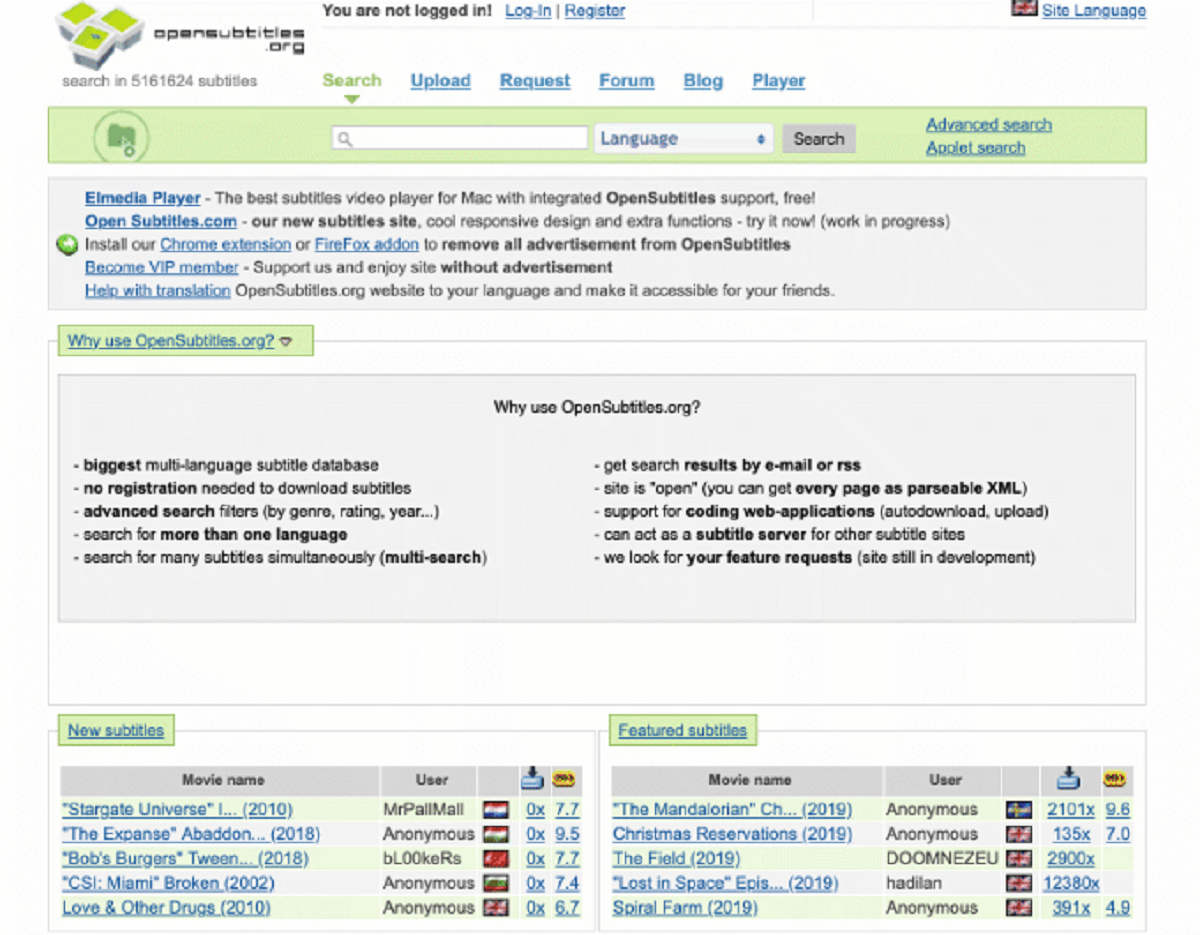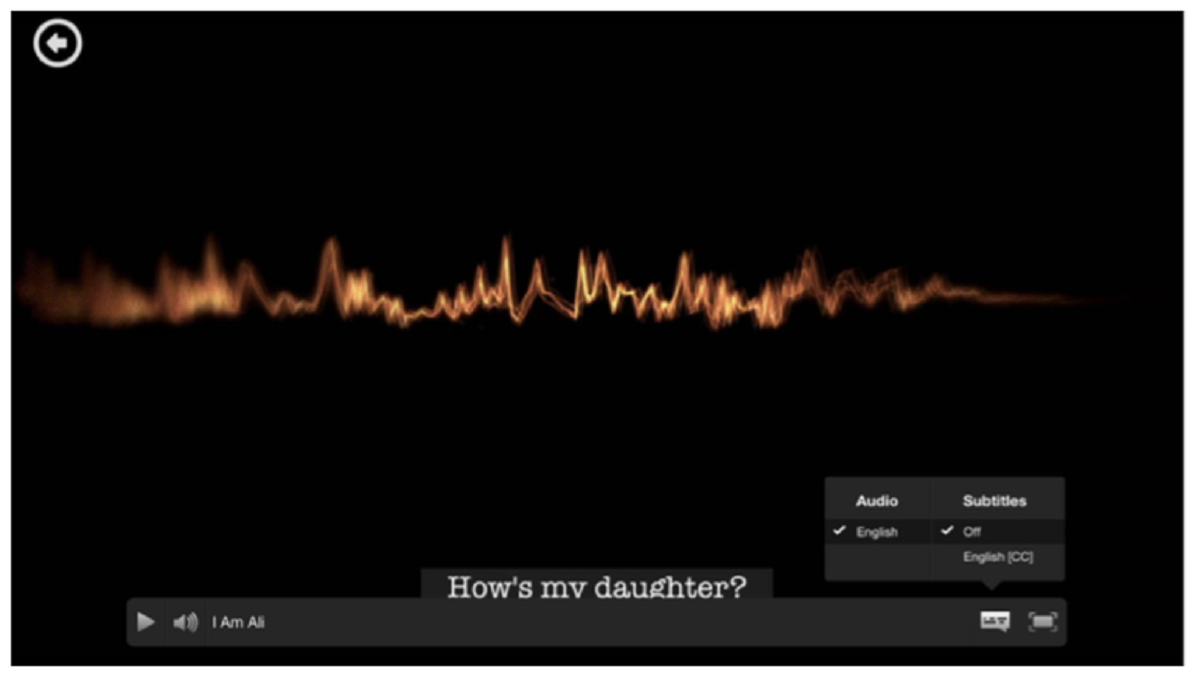Introduction
Subtitle: Understanding the Importance of SDH Subtitles
Subtitles have become an integral part of our media consumption experience. Whether we are watching movies, TV shows, or online videos, subtitles help us understand the dialogue and enhance our comprehension. However, there is a special type of subtitles known as SDH subtitles that go beyond simply displaying the spoken words. In this article, we will explore the world of SDH subtitles, their significance, and how they differ from regular subtitles.
SDH, which stands for Subtitles for the Deaf and Hard of Hearing, is a specialized form of subtitling that not only provides the dialogue but also includes additional information for viewers who may have hearing impairments. Unlike regular subtitles, which primarily focus on translating the spoken language, SDH subtitles aim to make the audiovisual content accessible to a wider audience by providing descriptions of significant sound effects, music cues, and non-speech elements.
The importance of SDH subtitles cannot be overstated. They play a crucial role in ensuring equal access to media for individuals who are deaf, hard of hearing, or have other auditory challenges. By including descriptions of non-verbal audio elements, SDH subtitles enable these viewers to fully immerse themselves in the audiovisual experience and understand the nuances of the content. It not only benefits those with hearing impairments but also helps individuals who may have difficulty understanding the language or accents being used in the media.
There are several benefits to using SDH subtitles, both for the viewers and content creators. For the viewers, SDH subtitles provide an inclusive and accessible media experience, allowing them to fully enjoy and understand the content without relying solely on the audio. They can follow along with the dialogue, grasp the subtleties of the story, and engage with the emotions portrayed by the actors. SDH subtitles also enable viewers to watch content in noisy environments or situations where having the sound on may not be feasible, such as libraries or public transportation.
For content creators, SDH subtitles enhance the reach and impact of their content. By making media accessible to a broader audience, they increase the chances of their work being seen, appreciated, and shared. SDH subtitles can also improve search engine optimization (SEO) as search engines index the text within the subtitles, making it easier for people to find and discover the content. Additionally, SDH subtitles can be beneficial for international audiences, as they provide translation not just for spoken language but also for sound effects and non-verbal elements, overcoming language and cultural barriers.
What are SDH Subtitles?
Subtitle: An Overview of SDH Subtitles and Their Purpose
SDH subtitles, or Subtitles for the Deaf and Hard of Hearing, are a specialized form of subtitling that goes beyond the translation of spoken language. SDH subtitles are designed to provide a comprehensive viewing experience for individuals who are deaf, hard of hearing, or have auditory challenges. These subtitles not only display the dialogue but also include additional information about sound effects, music cues, and other non-speech elements that are crucial to understanding the audiovisual content.
The primary purpose of SDH subtitles is to make media accessible for individuals with hearing impairments. By incorporating descriptions of important audio cues, SDH subtitles enable these viewers to fully comprehend the audiovisual experience and engage with the content on a deeper level. This level of accessibility ensures that individuals with hearing challenges are not excluded from enjoying movies, TV shows, or online videos.
The inclusion of sound effects in SDH subtitles allows viewers to experience the desired mood, atmosphere, and emotions portrayed in the media. It brings attention to crucial audio elements that may not be apparent through visual cues alone. These descriptions can include details about music genres, intensity of sounds, environmental noises, and character actions that are accompanied by relevant audio. By providing this additional contextual information, SDH subtitles enhance the overall viewing experience for individuals with hearing impairments.
Another important aspect of SDH subtitles is the inclusion of speaker identification. This helps viewers differentiate between different characters and understand who is speaking at any given time, especially when multiple characters are present in a scene. Clear speaker identification ensures that viewers can follow the dialogue effectively and fully grasp the interactions between characters.
SDH subtitles also take into account other visual elements in the content. Descriptions of non-verbal communication, like body language and facial expressions, are generally included to provide a more comprehensive understanding of the audiovisual context. These descriptions can help in conveying complex emotions, humor, and important visual cues that are not explicitly mentioned in the dialogue.
In summary, SDH subtitles are a vital accessibility feature that aims to provide a complete audiovisual experience for individuals with hearing impairments. By incorporating descriptions of sound effects, speaker identification, and other visual cues, SDH subtitles ensure that viewers are not only able to follow the dialogue, but also fully participate in the emotional and contextual aspects of the content.
How do SDH Subtitles Differ from Regular Subtitles?
Subtitle: Understanding the Distinctions between SDH Subtitles and Regular Subtitles
While both SDH subtitles and regular subtitles serve the purpose of providing text representation of spoken language, there are significant differences between the two. Regular subtitles, also known as closed captions, primarily focus on translating the dialogue into written form. On the other hand, SDH subtitles go beyond mere translation and provide additional information to make the content more accessible for individuals with hearing impairments. Let’s explore the key distinctions between SDH subtitles and regular subtitles.
One of the main differences lies in the level of detail included in the subtitles. Regular subtitles typically focus on providing a straightforward translation of the spoken language, ensuring that viewers can follow along with the dialogue. However, SDH subtitles not only include the dialogue but also encompass meaningful sound effects, music cues, and non-speech elements that contribute to the auditory experience. Descriptions of these audio cues help individuals with hearing impairments fully engage with the content and understand the complete audiovisual context.
Another distinction between SDH subtitles and regular subtitles is the inclusion of speaker identification. In regular subtitles, speaker identifications are often omitted, assuming that viewers can differentiate between characters based on visual and audio cues. However, SDH subtitles prioritize accessibility and incorporate speaker identification to ensure that viewers with hearing impairments can comprehend dialogue exchanges and track conversations more effectively. Clear speaker identification is especially important in scenes involving multiple characters or when the visual cues are not sufficient to determine who is speaking.
Additionally, regular subtitles generally focus on conveying the spoken language, while SDH subtitles take into account visual elements in the content as well. SDH subtitles may include descriptions of non-verbal communication such as body language, facial expressions, or important visual cues that enhance the understanding of the audiovisual context. These additional descriptions provide individuals with hearing impairments a more comprehensive experience, allowing them to fully grasp the emotions, nuances, and non-verbal interactions portrayed in the media.
Furthermore, SDH subtitles adhere to specific technical requirements to ensure optimal accessibility. They often employ a distinct visual style, such as the use of uppercase letters for sound effects or italics for off-screen dialogue. These visual cues help differentiate between different types of audio elements and enhance the overall viewing experience for those with hearing impairments. Regular subtitles, on the other hand, typically follow a more general style that focuses solely on the translation of the spoken language.
In summary, the primary differences between SDH subtitles and regular subtitles lie in the level of detail, inclusion of speaker identification, consideration of visual elements, and adherence to specific technical requirements. SDH subtitles go beyond translation and aim to provide a complete audiovisual experience for individuals with hearing impairments, ensuring they can fully engage with and understand the content.
Why are SDH Subtitles Important?
Subtitle: The Significance of SDH Subtitles in Media Accessibility
SDH subtitles play a crucial role in ensuring equal access to media for individuals who are deaf, hard of hearing, or have auditory challenges. These subtitles provide a level of inclusivity that goes beyond regular subtitles, enhancing the viewing experience for a wider audience. Let’s delve into the importance of SDH subtitles and why they are vital in today’s media landscape.
One of the main reasons SDH subtitles are important is their ability to make audiovisual content accessible to individuals with hearing impairments. By providing descriptions of significant sound effects, music cues, and non-speech elements, SDH subtitles enable viewers with hearing challenges to fully comprehend the content at hand. This level of accessibility ensures that they are not left out of the cultural and entertainment experiences that the media has to offer. SDH subtitles break down barriers and create an inclusive environment for individuals with hearing impairments to enjoy movies, TV shows, and online videos.
Furthermore, SDH subtitles are not only beneficial for individuals with hearing impairments, but also for those who may have difficulty understanding the language or accents used in the media. Whether it is due to language barriers or unfamiliarity with regional dialects, SDH subtitles ensure that the dialogue can be followed and understood by a wider range of viewers. This feature makes media more accessible and enjoyable for diverse audiences, transcending linguistic and cultural boundaries.
The importance of SDH subtitles is further underscored by their impact on education and learning. These subtitles can be invaluable for individuals learning a new language or studying a specific subject. By providing not just the dialogue but also descriptions of sound effects and non-verbal elements, SDH subtitles enhance comprehension and facilitate a deeper understanding of the material being presented. This makes SDH subtitles a valuable tool for educational institutions, online learning platforms, and training programs.
Moreover, SDH subtitles have the potential to enhance the viewing experience for all viewers, not just those with hearing impairments. In noisy environments or situations where having the sound on may not be feasible, such as public transportation or libraries, SDH subtitles allow individuals to follow along with the dialogue and fully engage with the content. They provide an alternative way to consume media, ensuring that the message is not lost even in challenging listening conditions.
In summary, SDH subtitles are important as they promote inclusivity, enable individuals with hearing impairments to fully engage with the content, aid in language comprehension, facilitate learning, and enhance the viewing experience for all viewers. They play a crucial role in making media more accessible and breaking down barriers, ultimately fostering a more inclusive society.
The Benefits of Using SDH Subtitles
Subtitle: Enhancing Accessibility and Enjoyment of Media Content
The utilization of SDH subtitles, or Subtitles for the Deaf and Hard of Hearing, offers numerous benefits for both viewers and content creators. These subtitles go beyond simple translation, providing additional information that enhances the accessibility and enjoyment of media content. Let’s explore the advantages of using SDH subtitles in more detail.
One of the primary benefits of SDH subtitles is increased accessibility for individuals with hearing impairments. By including descriptions of sound effects, music cues, and non-speech elements, SDH subtitles ensure that viewers with hearing challenges can fully understand and engage with the audiovisual content. This inclusivity allows everyone to enjoy movies, TV shows, and online videos, regardless of their auditory abilities.
Additionally, SDH subtitles benefit individuals who may have difficulty understanding the spoken language or accents used in the media. SDH subtitles provide clear and accurate transcriptions of the dialogue, allowing viewers to follow along easily. This feature not only helps those with language barriers or limited language proficiency but also aids individuals studying a foreign language or learning new vocabulary.
Moreover, SDH subtitles can improve the overall viewing experience for all viewers, even those without hearing impairments. In noisy environments or situations where having the sound on is not feasible, such as public transportation or libraries, SDH subtitles enable individuals to follow the dialogue and understand the content without relying solely on audio. This flexibility allows for increased engagement and enjoyment of media across various settings and circumstances.
For content creators, the use of SDH subtitles broadens the reach and impact of their creations. By making media accessible to a wider audience, they increase the chances of their work being seen and appreciated. Additionally, SDH subtitles can improve search engine optimization (SEO) as search engines can index the text within the subtitles, making it easier for people to find and discover the content. The increased accessibility provided by SDH subtitles also helps content creators develop a positive brand reputation as they prioritize inclusivity and cater to the diverse needs of their audience.
Furthermore, SDH subtitles can facilitate international distribution of media content. The inclusion of descriptions for sound effects and non-verbal elements, along with the dialogue translation, helps overcome language and cultural barriers. SDH subtitles allow viewers from different regions and backgrounds to fully understand and engage with the content, bridging gaps and fostering a global audience.
In summary, the benefits of using SDH subtitles are numerous. They enhance accessibility for individuals with hearing impairments, aid language comprehension, improve viewing experiences in various environments, increase the reach and impact of content, and facilitate international distribution. SDH subtitles not only make media more inclusive but also elevate the overall quality and enjoyment of the viewing experience for all audiences.
How are SDH Subtitles Created?
Subtitle: The Process of Crafting SDH Subtitles
The creation of SDH subtitles, or Subtitles for the Deaf and Hard of Hearing, involves a multi-step process that extends beyond standard subtitling. To ensure accuracy and accessibility, the creation of SDH subtitles requires attention to detail and adherence to specific guidelines. Let’s delve into the steps involved in crafting SDH subtitles.
1. Transcription: The first step is transcribing the dialogue of the audiovisual content. Transcribers carefully listen to the spoken words and write them down, ensuring accuracy and capturing the full conversation. This transcription serves as the foundation for the SDH subtitles.
2. Sound Effects and Non-Speech Elements: Once the dialogue transcription is complete, it is essential to identify and describe relevant sound effects, music cues, and non-speech elements. These can include environmental sounds, background music, laughter, whispers, or significant visual cues that enhance the understanding of the audiovisual context.
3. Timestamping: Each subtitle is time-stamped to synchronize with the audio and video. Timestamps ensure that the subtitles appear on screen at the appropriate moments, aligning with the dialogue and relevant audio cues. Accurate syncing is crucial for viewers to follow the content seamlessly.
4. Formatting and Styling: SDH subtitles have specific formatting and styling requirements to enhance readability and differentiate between different types of information. Guidelines may include using uppercase letters for sound effects, italics for off-screen dialogue, and different colors or fonts for speaker identification. These visual cues help viewers distinguish between various audio and visual elements.
5. Speaker Identification: Clear speaker identification is crucial in SDH subtitles, especially in scenes with multiple characters. Subtitlers include speaker tags or character names to indicate who is speaking at any given time. This ensures that viewers can follow the dialogue and understand the interactions between characters.
6. Quality Check and Revision: Once the SDH subtitles are created, a quality check is performed to ensure accuracy, coherence, and proper synchronization. Subtitlers review the subtitles against the audiovisual content, making any necessary revisions or adjustments. This step is crucial to maintain the integrity and accessibility of the subtitles.
7. Delivery and Integration: The final step involves delivering the SDH subtitles to the appropriate platforms or media distribution channels. SDH subtitles can be embedded within the media file or provided as a separate subtitle file, such as an SRT or VTT file, that can be enabled or disabled by the viewer. Integration ensures that the SDH subtitles are available for viewers to access and enjoy the content.
In summary, crafting SDH subtitles involves transcription, identifying sound effects and non-speech elements, timestamping, formatting and styling, speaker identification, quality check, and delivery. The creation process requires attention to detail, adherence to specific guidelines, and a commitment to providing accurate and accessible subtitles for individuals with hearing impairments.
The Technical Requirements for SDH Subtitles
Subtitle: Ensuring Compatibility and Accessibility of SDH Subtitles
SDH subtitles, or Subtitles for the Deaf and Hard of Hearing, have specific technical requirements to ensure compatibility and accessibility across various platforms and devices. These requirements impact factors such as file formats, font styles, timing, and more. Let’s explore the key technical aspects that need to be considered when creating SDH subtitles.
1. File Formats: SDH subtitles are typically saved in commonly used subtitle file formats, such as SubRip (.srt), WebVTT (.vtt), or Timed Text Markup Language (.ttml). These formats ensure compatibility with a wide range of media players and platforms.
2. Formatting and Styling: SDH subtitles require distinct formatting and styling to enhance readability and differentiate between different types of text. This includes using clear and easy-to-read fonts, selecting appropriate font sizes, and employing specific styling for different elements such as sound effects or speaker identification. The formatting and styling should conform to accessibility guidelines for individuals with visual impairments as well.
3. Timing and Synchronization: Accurate and synchronized timing is a critical aspect of SDH subtitles. Each subtitle should be time-stamped to align precisely with the corresponding audio and video content. This ensures that the subtitles appear on screen at the appropriate moments, providing a seamless viewing experience for individuals with hearing impairments.
4. Speaker Identification: Clear and consistent speaker identification is essential in SDH subtitles, particularly in scenes with multiple characters. Subtitles should include speaker tags or character names to indicate who is speaking. Consistent and accurate speaker identification helps viewers easily follow the dialogue and understand the interactions between characters.
5. Captions for Non-Speech Elements: SDH subtitles should include captions for significant non-speech elements, such as sound effects, music cues, and environmental noises. These captions describe the nature of the audio elements and provide context for individuals with hearing impairments. Captions for non-speech elements enhance the overall comprehension and the emotional engagement of the viewers.
6. Accessibility Considerations: SDH subtitles should be created with accessibility in mind. This includes using appropriate color contrast for individuals with visual impairments, avoiding the use of flashing or blinking text, and ensuring that the subtitles do not obscure important visual information on the screen. Following accessibility guidelines improves the usability and inclusivity of SDH subtitles for all viewers.
7. Localization: If the content is intended for international distribution, proper localization of SDH subtitles is important. This involves translating the dialogue, sound effects, music cues, and other non-speech elements while retaining the intended meaning and context. Localization ensures that SDH subtitles can effectively communicate the audiovisual content to diverse audiences.
In summary, the technical requirements for SDH subtitles include using compatible file formats, employing appropriate formatting and styling, ensuring accurate timing and synchronization, providing clear speaker identification, incorporating captions for non-speech elements, considering accessibility guidelines, and properly localizing the subtitles. Adhering to these requirements enhances the compatibility, accessibility, and usability of SDH subtitles for individuals with hearing impairments and others who rely on or benefit from these subtitles.
Where to Find SDH Subtitles?
Subtitle: Sources for Accessible SDH Subtitles
Finding SDH subtitles can be a challenging task, especially when accessibility options are not readily available on mainstream media platforms. However, there are several sources where individuals can find SDH subtitles to enhance their viewing experience. Let’s explore some common avenues to find SDH subtitles.
1. Online Streaming Platforms: Some online streaming platforms, such as Netflix, Amazon Prime Video, and Hulu, offer SDH subtitles as part of their accessibility features. Users can enable SDH subtitles by accessing the settings or preferences menu within the platform. These platforms often provide a wide range of content with SDH subtitles, including movies, TV shows, and documentaries.
2. DVD and Blu-ray Discs: Physical copies of movies and TV series often include SDH subtitles as an accessibility option. When purchasing or renting DVDs or Blu-ray discs, individuals can look for titles that specifically mention SDH subtitles on the packaging. These subtitles can be enabled through the menus or settings of the DVD or Blu-ray player during playback.
3. External Subtitle Websites: There are various websites that specialize in providing subtitles for movies, TV shows, and other forms of media. These websites, such as OpenSubtitles.org, Subscene.com, and Addic7ed.com, offer a wide selection of SDH subtitles in multiple languages. Users can search for specific titles and download the subtitle files to use with their media players or streaming platforms.
4. Accessibility Organizations and Libraries: Some accessibility organizations, such as the National Association of the Deaf or local libraries, may offer SDH subtitles for certain movies or TV programs as part of their resources for individuals with hearing impairments. These organizations may provide online access to SDH subtitles or offer physical media with SDH subtitles available for borrowing.
5. Community Subtitling Initiatives: There are community-driven initiatives that focus on creating SDH subtitles for various media content. These initiatives may operate through forums, social media groups, or dedicated websites where users can request or contribute SDH subtitles. These platforms rely on volunteers who are passionate about making media accessible to individuals with hearing impairments.
6. Film Festivals and Specialized Events: Film festivals and specialized events, particularly those that prioritize accessibility and inclusion, often provide SDH subtitles for select screenings. These subtitles are typically displayed on the screen in real-time, ensuring that individuals with hearing impairments can participate fully in the event. Checking the program or contacting the organizers can provide information on the availability of SDH subtitles for specific screenings or discussions.
It is worth noting that the availability of SDH subtitles may vary depending on the region, language, and the specific media content. Additionally, some sources may require subscription fees or other forms of payment to access SDH subtitles. Nonetheless, with the increasing emphasis on accessibility, the options for finding SDH subtitles are continually growing, enabling individuals with hearing impairments to enjoy a wide range of audiovisual content.
Conclusion
Subtitle: Embracing Inclusivity through SDH Subtitles
SDH subtitles, or Subtitles for the Deaf and Hard of Hearing, play a vital role in creating an inclusive and accessible media landscape. These subtitles go beyond conventional subtitles, providing descriptions of sound effects, music cues, and non-speech elements to allow individuals with hearing impairments to fully engage with the audiovisual content. SDH subtitles not only benefit people with hearing challenges but also enhance the viewing experience for individuals with language barriers, those learning a new language, and those in noisy environments.
The importance of SDH subtitles cannot be overstated. They empower individuals with hearing impairments to enjoy movies, TV shows, and online videos on an equal footing, ensuring that they do not miss out on the cultural and entertainment experiences that media offers. SDH subtitles also make media more accessible for individuals with language barriers or limited language proficiency, enabling them to understand and appreciate content in their preferred language. Furthermore, SDH subtitles contribute to education, language learning, and international distribution of media, fostering a more inclusive and globally connected society.
Content creators also benefit from SDH subtitles as they enhance the reach and impact of their work. By making media accessible to a wider audience, they increase the chances of their content being discovered, shared, and appreciated. SDH subtitles not only improve accessibility but also contribute to search engine optimization, attract international viewership, and build a positive brand reputation centered on inclusivity.
Finding SDH subtitles can be done through streaming platforms, DVD and Blu-ray discs, external subtitle websites, accessibility organizations, community-driven initiatives, and specialized events. These sources offer options for individuals to access SDH subtitles in multiple languages and for various forms of media content.
In conclusion, the use of SDH subtitles represents a significant step towards creating a more inclusive and accessible media environment. By embracing the unique features of SDH subtitles, we can ensure that everyone, regardless of their auditory abilities or language proficiency, can fully engage with and enjoy a wide range of audiovisual content. SDH subtitles break down barriers, bridge gaps, and foster a sense of belonging for individuals with hearing impairments and others who benefit from the accessibility they provide. It is vital that we continue to prioritize and advocate for the inclusion of SDH subtitles to create a more inclusive media landscape for all.










